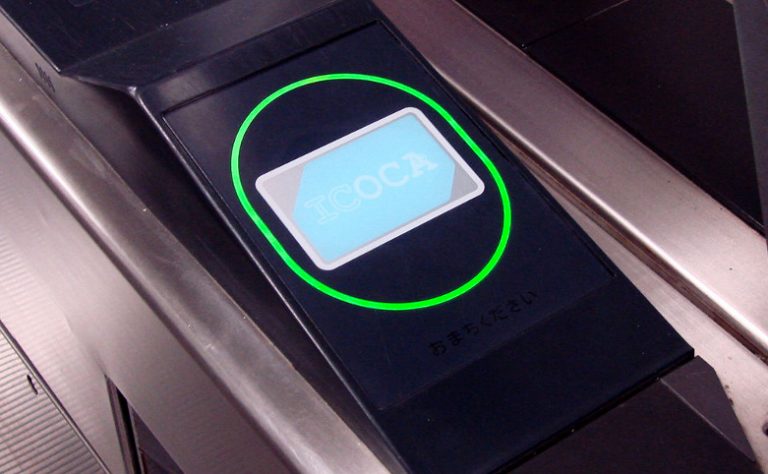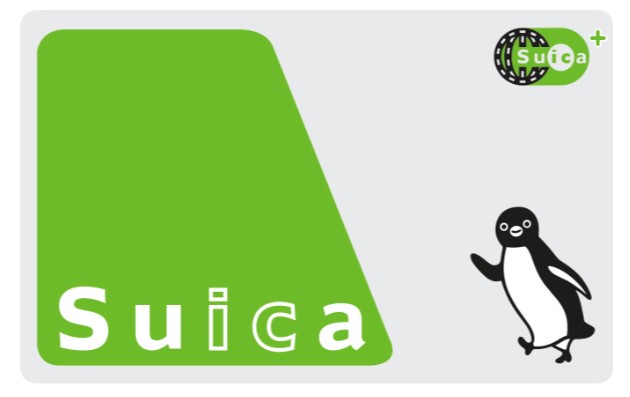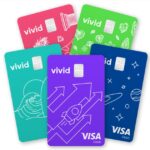Experience the seamless convenience of Japan’s cutting-edge contactless cards, revolutionizing travel for residents and tourists alike. Unlock a world of possibilities with Suica, Pasmo, Icoca, and more, catering to diverse regions and cities across the country. Originally designed for transportation, these cards have expanded their reach, becoming indispensable for various services. Immerse yourself in effortless journeys on trains, buses, and trams, swiftly tapping your way through stations and boarding with ease. Simply tap, pay, and immerse yourself in the wonders of Japan.
Prepaid IC cards in Japan
Here’s a quick rundown of the cards:
- Suica: Highly popular in the Tokyo metropolitan area and other regions throughout Japan.
- Pasmo: Widely embraced within the Tokyo metropolitan area.
- Icoca: A convenient and contactless card primarily used in the Kansai region, encompassing vibrant cities like Osaka, Kyoto, and Kobe.
- Kitaca: The contactless card of choice for the Hokkaido region, known for its seamless functionality.
- Toica: Embraced throughout the Chubu region, including the bustling city of Nagoya, this contactless card ensures effortless travel.
- Manaca: An additional contactless card available within the Chubu region, providing a hassle-free commuting experience.
- Pitapa: A post-paid contactless card, widely utilized in the Kansai region and other parts of Japan, offering convenient payment options.
- Nimoca: A contactless card originating from the Kyushu region, enabling smooth travels across the area.
- Hayakaken: Fukuoka city’s very own contactless card, making transportation within the city seamless and efficient. Sugoca: Another remarkable contactless card hailing from the Kyushu region, further enhancing the ease of travel for its users.

Where Can You Buy a Prepaid IC Card?
Where might one procure a prepaid card in Japan, you ask? The answer lies in the ubiquitous IC cards, such as Suica, Pasmo, and a host of regional variants, available at a multitude of locations. Here are some of the most common places to acquire these handy cards:
- Train and Subway Stations: A plethora of train and subway stations across Japan are equipped with IC card vending machines. These machines not only allow you to purchase a new IC card but also enable you to top it up simultaneously. They are typically located in ticket vending zones or near station entrances and exits.
- Convenience Stores: Renowned convenience stores like 7-Eleven, FamilyMart, and Lawson also offer IC cards. You’ll usually find the vending machines for these cards near the cash registers or in the ticket service area.
- JR Offices and Private Transportation Companies: Certain major JR (Japan Railways) stations and private transportation company offices also sell IC cards. For instance, at Tokyo Station and Shinjuku Station in Tokyo, you’ll find JR offices where these cards are available.
- Airports: Major airports in Japan, such as Haneda Airport and Narita Airport, also offer IC cards. These can be purchased at convenience stores, kiosks, or vending machines located within the terminals.
- Official Websites: IC card operators, like Suica and Pasmo, often have official websites where you can purchase IC cards online. If you wish to secure a prepaid card prior to your arrival in Japan, you can do so through Japan Experience. Here, you can purchase a JR Pass, a Sim Card, and a Suica all in one go.
Beyond these common locations, you may stumble upon other retailers and establishments selling IC cards in various parts of Japan.
It’s worth noting that IC cards are generally interoperable, meaning a card purchased in one region can be used in other areas of Japan. However, each IC card may offer slightly different features and benefits depending on the region and operator. Therefore, it’s advisable to research which IC card best suits your needs and the area you plan to visit in Japan.
Where Can You Use These Cards?
Originally designed as electronic transport cards, their usage has expanded over time. Here are some places where you can use these IC cards:
- Public Transport: They are primarily used for public transport, including trains (JR lines, private lines, and subway lines), buses, and trams across Japan. They’re used to pay travel fares when entering and exiting stations or boarding buses.
- Convenience Stores: IC Cards are accepted at many popular convenience stores in Japan, such as 7-Eleven, FamilyMart, and Lawson. You can use it to buy food, drinks, and other items.
- Vending Machines: These cards can also be used in vending machines for drinks, food, and other products at train stations, on the street, and in various public places in Japan.
- Shops and Restaurants: Many retail stores, restaurants, and establishments in Japan accept the Suica card as a form of payment. You can use it to pay for your purchases in clothing, electronics, books, restaurants, and other places that display the Suica logo or the contactless payment symbol.
- Theme Parks and Tourist Attractions: Some theme parks, such as Tokyo Disneyland and Universal Studios Japan, accept IC Cards as a form of payment for admission and at various stores and restaurants within the parks. In addition, some tourist attractions and museums may also accept it as a form of payment.
Please note that the acceptance of these cards may vary from place to place and from establishment to establishment. In general, there are many places in Japan that support contactless payments or IC cards, such as Suica, and will allow you to use it as a convenient and quick payment method.
How to Use These Cards
Using these cards is as simple as holding them up to the card reader at the entrance and exit gates of train and subway stations, or when getting on and off buses. To make purchases, present the card to the cashier or use it at the vending machine.

How To Top-Up IC Cards
These cards are rechargeable and can be topped up at vending machines in train and subway stations. They have no expiration date, which means you can use them during your stay in Japan without worrying about their validity.
Contactless cards can be recharged in various ways and places in Japan, but basically at any machine bearing the IC logo. Here are some common options to top up your card:
- Ticket vending machines at train and subway stations: In most Japanese train and subway stations, you’ll discover ticket vending machines that offer the convenience of recharging your Suica card. Look out for the dedicated Suica card recharge option on these machines, allowing you to effortlessly select the desired amount to load onto your card.
- Customer service counters at train stations: Larger train stations often feature customer service counters where you can conveniently recharge your Suica card. The staff will gladly assist you in reloading your card with the desired amount, ensuring a hassle-free experience.
- Convenience stores: Various Japanese convenience stores, such as 7-Eleven, FamilyMart, and Lawson, where you’ll find dedicated machines to reload your Suica card. Typically located near the cash registers, these machines are easily identifiable. Should you encounter any difficulties, the store staff will be more than happy to provide assistance.
- Suica mobile application: If you possess a compatible mobile phone and have registered your Suica card, you can take advantage of the Suica mobile application to recharge your card. This user-friendly option allows you to reload funds directly from your phone.
How To Check Your Balance
There are several options to check the balance of your Suica card:
- Ticket vending machines at train and subway stations: found throughout most train and subway stations in Japan. These machines not only enable card recharge but also provide a “Balance” or “Balance Inquiry” option on the screen. Simply follow the on-screen instructions to access and view your current card balance.
- Top up vending machines at train stations and stores: when using these vending machines at train stations or stores to top up your Suica card, some of these machines also offer the added convenience of displaying your remaining balance before finishing the recharge transaction.
- IC card readers at entrance/exit gates: swipe your Suica card at the readers located at entrance or exit gates of train stations or on buses. These intuitive readers often display your current card balance on their screens, eliminating the need for a vending machine and allowing you to quickly and conveniently check your balance on the go.
Pricing
Except for Pitapa, all cards cost 2,000 yen, which includes a refundable deposit of 500 yen and 1,500 yen credit. The Pitapa card requires an application and credit check prior to issuance.
Return Policy
Except for Pitapa (which is non-refundable), all cards can be returned to their respective stations for a deposit refund. However, bear in mind that a fee of 220 yen will be deducted. After this fee, the remaining balance on the card will be refunded to you.
If you wish to obtain a refund on your IC card, you can visit the customer service counters at train stations or the service centres of the East Japan Railway Company (JR East), which administers the Suica card.
Personalised Suica cards or Suica mobile cards cannot be returned. Instead, you can spend the remaining balance before leaving Japan, or save it for your next trip, as Suica cards do not expire.
Loss
In the unfortunate event of losing your card, none of the cards can be replaced and the remaining balance cannot be refunded, with the exception of Pitapa, which can be replaced for a fee.

Advantages of IC Cards
Contactless cards such as Suica or Pasmo offer several benefits:
- Convenience: They can be used on most train, bus and subway lines throughout Japan, and for purchases at convenience stores, vending machines and some restaurants.
- Speed: No need to withdraw cash or insert the card into a machine. Simply hold the card up to the reader for automatic payment.
- Security: As there’s no need to carry large amounts of cash, contactless cards are a safer option. If you lose your card, you can block it to prevent unauthorised use.
- Reloadable: Suica cards can be topped up whenever you need.
- Mobile Compatibility: Some mobile phones are compatible with Suica technology, allowing you to use your phone as a Suica card.
- No Need for Individual Tickets: Instead of buying individual tickets for each trip, you can use the Suica card for more efficient travel.
- Use in Multiple Regions: Although Suica originated in Tokyo, it is now compatible with other regional contactless cards in Japan, allowing users to travel to different regions with the same card.

Frequently Asked Questions
Can I use a card in a region other than where it was issued?
Yes, all these cards can be used in any region of Japan that accepts contactless cards.
Can I top up my card in a region other than where it was issued?
Yes, you can top up your card at any vending machine at subway and train stations in Japan.
Can I use these cards to shop at stores outside of train stations?
Yes, these cards can be used at convenience stores, vending machines and some restaurants that accept contactless cards.
Can I use more than one contactless card at the same time?
No, each journey requires its own contactless card. You cannot split a journey between two cards.
Can I transfer balance from one card to another?
No, the balance of one card cannot be transferred to another.
Can I get a refund if I lose my card?
No, in case of loss, none of the cards can be replaced and the remaining balance cannot be refunded, except Pitapa, which can be replaced for a fee.
Can I use these cards on long-distance buses or shinkansen?
No, these cards cannot be used on long-distance buses or shinkansen. They are mainly for local trains, buses and subways.
Can I lend my card to someone else to use?
Yes, these cards are not personal and can be used by anyone. However, they cannot be used for more than one person at a time.
Can I use Suica and PASMO on my mobile phone?
To use Suica and Pasmo on your mobile phone, you will need a phone that supports NFC (Near Field Communication) technology.
Compatibility with Suica and Pasmo on mobile may depend on the device’s operating system. The Suica app is compatible with iOS (iPhone) devices running iOS 8.0 or later, and Android devices running Android 5.0 or later. The Pasmo app, on the other hand, is available for Android devices and not for iOS.
Is there a limit to how much I can top up on my card?
Yes, the top-up limit varies depending on the card, but is generally around 20,000 yen.
Contactless cards in Japan are an essential tool for navigating the country’s transportation system. Whether you’re journeying around Tokyo with a Suica or Pasmo, exploring the Kansai region with an Icoca, or discovering the beauty of Hokkaido with a Kitaca, these cards offer a convenient and efficient way to travel and shop. Remember to always top up your card and keep it safe to enjoy a hassle-free travel experience in Japan.



